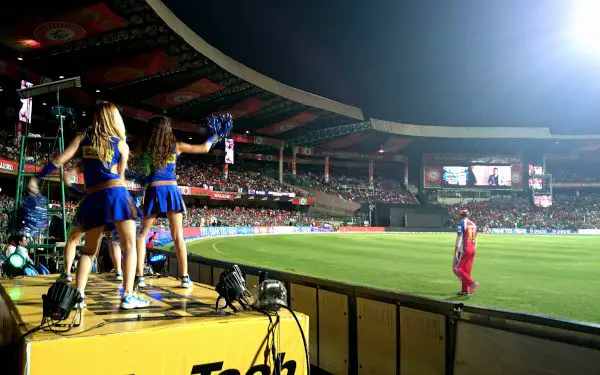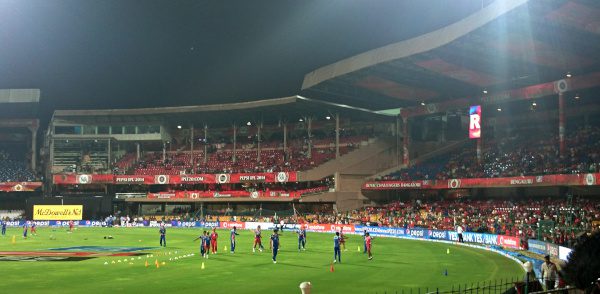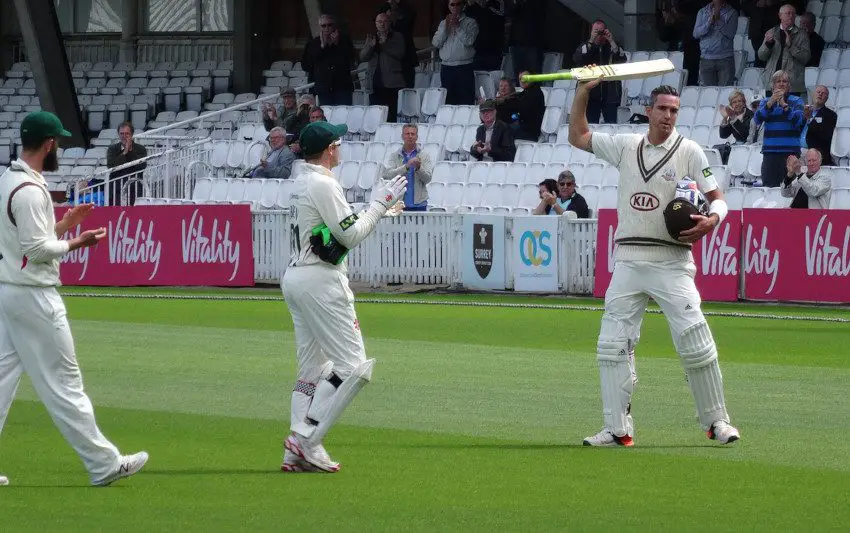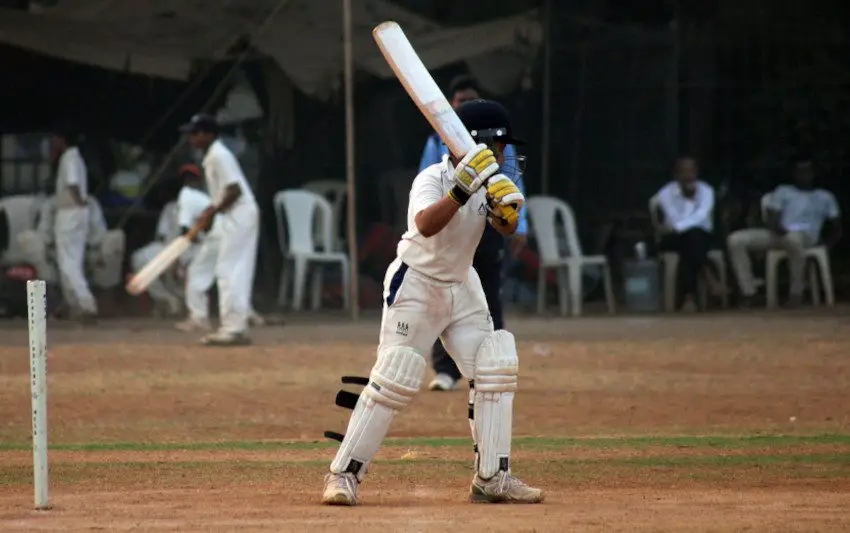Table of Contents
The 2022 edition of the Indian Premier League promises to be the biggest yet but what is the Mega Auction that has been seen for the first time this year?
What is the IPL Mega Auction?
The 15th edition of the IPL saw the addition of two extra teams. We now have ten franchise sides instead of the regular eight and that simply means that the tournament needs more players.
An auction takes place ahead of every IPL competition but this time, there are more players up for grabs so this has been termed as a Mega Auction. There were 590 names in the auction hat which is a big increase on previous seasons but how does it all work?
How Does the IPL Auction Work?
Before the auction takes place, any player wishing to take part who doesn’t already have a franchise will declare their availability. They then need to set a base price which is the minimum amount that any interested team will need to pay.
The base price is also called a reserve and the maximum figure, as of 2022, is INR 2 Crore. If the player reaches that reserve, they are sold but if the bids fall short or, if there are no bids at all, they will be unsold.
There is a possibility that a player can return to the table for the accelerated round of bidding which is explained in greater detail in this round up.

1. IPL Auction Rules and Process
There are rules in place to make the Mega Auction as fair as possible. Each team will have a budget so the owners and coaches have to think carefully about who they buy.
It isn’t a case of the most successful teams buying up all of the talent and some care and attention is needed in order to build an all-round squad.
The major part of that squad building process takes place at the IPL auction but it all begins before that bidding takes place.
2. Player Retention Policy
Not every player performing at the IPL will have gone through the auction process. The existing IPL franchise teams have a right to retain their best players at the end of the previous campaign. Anyone who they wish to release then has the right to enter the Mega Auction.
The eight existing teams were allowed to retain up to four players from their existing roster and they will declare their selections to the organisers some time in advance. As for the two new sides from Lucknow and Ahmedabad, they were allowed to directly sign three available players – two domestic and one international – in a brief window from December 1st to December 25th.
Therefore, as the auction appeared on the horizon, all ten teams had a core player list thanks to the retention policy. All of the rules relating to the IPL auction are subject to change but this was the picture ahead of the Mega Auction in 2022.
3. Player Categories
At any IPL auction, there are three categories of players which are:
- Capped Indian Players
- Uncapped Indian Players
- Overseas Players
A capped player is any individual who has played for India’s national team in any of the three formats – test cricket, one day internationals and T20 internationals.
Obviously, an uncapped player is one who is qualified to play for India but has yet to feature for the men’s national team in any of those three formats prior to the cut off point.
An overseas player is one who is not qualified to play for India. Players from Pakistan are not currently allowed to feature in the IPL but, otherwise, those names could come from any full member or associate member of the ICC.
It doesn’t matter if those overseas players have been capped at international level or not. If they are qualified to play for another country other than India, they will fall into the overseas player category.
Those categories are important for the auction as each of the franchise teams has to strike a balance.
Teams can only include a maximum of eight overseas players in their final squad. At present, there are no rules relating to capped and uncapped players so there are no limits in this respect. In theory, a team could fill their roster with capped players but the budget system is likely to prevent them from doing this.
A capped player will usually cost more money than those that have no caps at all at senior level. Uncapped players will generally be cheaper so it’s a case of using that budget wisely in order to strike a balance between high prices and less expensive cricketers.
4. IPL Player Prices and Team Budget
Each of the ten franchise teams has a budget in place ahead of the Mega Auction. This also helps to keep things fair as a club with a huge fund would buy up all the best players while leaving the rest of the sides to battle over the remaining names.
The exact figures have changed over the years but, in 2022, each team had up to 90 Crore to spend. Interestingly, there has been a minimum spend attached to the IPL auction and it’s based on a percentage of that maximum figure.
In 2022, it was decided that teams must spend at least 67.5 Crore from that total of 90 Crore. I’m not 100% sure as to why this is the case but it does keep things interesting. And, with so much money involved for the players, it must be impossible not to hit that minimum floor of 67.5 Crore.

Speaking of player values, we need to talk about base price and the figures that are paid for the individuals that are sold at the auction. The base prices that are set are ultimately decided by the players themselves who have minimum and maximum figures.
At the 2022 Mega Auction, the lowest base price that a player could set was INR 10 Lakh. At the top end of the scale, they are not allowed to set a base price above INR 2 Crore.
I would assume that the top players have agents and that they would discuss their potential base prices with them before going ahead. Whatever their reasoning may be, if that base price is not met then the player cannot be sold.
5. Accelerated Bidding
As the name suggests, this is a way of speeding things up after the first round of bidding. Under the accelerated bidding process, teams can recall players who were unsold in the initial round and they can call players forward from future lists.
Because these players have been nominated by the ten franchises, there is some certainty that they will be sold in the accelerated round. This has the overall effect of making things much quicker and that’s why the word ‘accelerated’ is used in its context.
There is the potential to have more than one accelerated round: Things may change in the future but the easiest way in which to explain this is to look at what happened in the IPL Mega Auction of 2022.
- In the first round of accelerated bidding, players on the list from 162 to 590, plus all of the unsold players from the initial round of bidding were included.
- Following this sequence, there was a second round of accelerated bidding: By this point, all 590 players involved in the 2022 mega auction had been put up for sale. Therefore, the accelerated bidding only included those who were not sold in the first two rounds.
- Here, the ten franchises could name between five and seven players who they wanted to recall from the unsold list.
- Finally, there was one last round of accelerated bidding which included 23 unsold players. When this round was finished, the IPL Mega Auction was finally completed.

IPL Auction FAQ
What Happens to Unsold IPL Players?
As we have seen, if a player is unsold in the early rounds of bidding, they may be recalled at a later point as part of the accelerated auction.
Players who are unsold when the auction finally comes to a close will not take part in the IPL. They are simply discarded and will have to try again next year.
However, if an existing member of a franchise squad suffers an injury, that team has the right to call up a replacement. In all probability, that replacement will come from the unsold list.
How Many Overseas Players are Allowed in the IPL?
In terms of playing XIs, each franchise can field up to four overseas players at any one time. There must be at least seven domestic Indian players in the starting line up.
In terms of overall squad listings, teams could buy up to a maximum of eight overseas players. Those total squads must contain a minimum of 18 players and a maximum of 25.
Who Gets the Money from the IPL Auction?
There’s a lot of money spent in the IPL auction but where does it go? In fact, all of the money spent goes directly to the player in question. When the winning bid is made, the franchise team in question has entered into a contract with the player. Usually that contract will last for three years.
In effect, the team with the highest bid agrees to pay that player the bid amount for the next three years. Therefore, if a player is sold for INR 2 Crore, the team will pay INR 2 Crore every year for three years.
What is the Right to Match Card?
The Right to Match Card was not employed in the 2022 Mega Auction but it could return in the future. Under this system, teams could buy back players that they had previously released.
Once bidding had ended for the player in question, their former franchise had the right to match the highest bid using their Right to Match Card. If they chose to go down this route, the player would be theirs.
At the mega auction ahead of IPL 15, it would have been unfair to the two new teams to have a Right to Match system so perhaps we will see this return in 2023.


